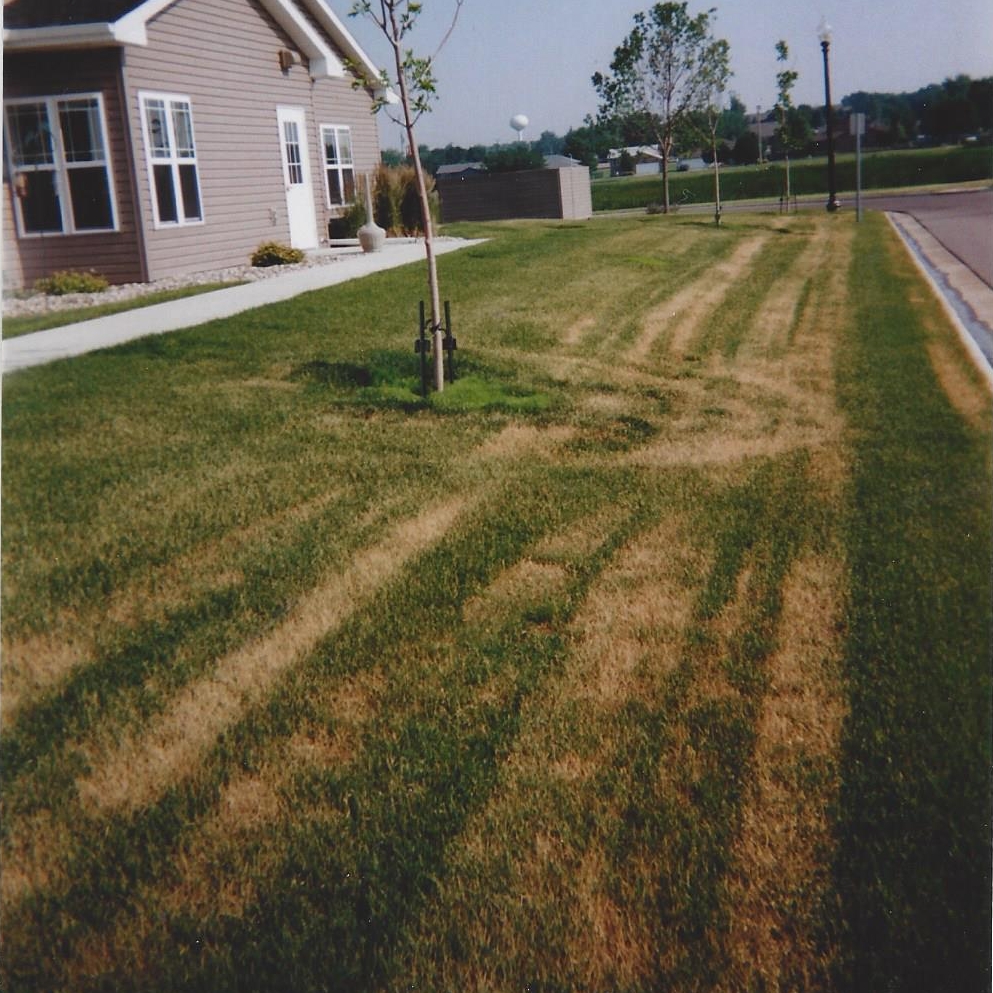LATE SPRING
LATE SPRING
Area of sudden drought stress in a lawn that didn't get quite enough water. This is, unfortunately common with urban soils which may have areas of gravel, packed clay or building debris.
Good mowing is one key to a healthy lawn. The recommended cutting height is 3 1/2" (4“ with large mowers) until around October tenth. On push mowers this may be the highest setting. Tall mowing has numerous advantages:
++ Better disease resistance. ++ Much better shade tolerance.
++ Reduced re-growth of weeds. ++ Deeper roots for better drought tolerance.
++ Shorter mowing results in shorter roots and it takes 60 days of good mowing to again grow deeper roots.
Good watering is the other key to a nice lawn. Your lawn needs one to two inches of water per week depending on rainfall, temperature, wind conditions, soil type and angle of exposure to the sun. As a very general rule, you will want to water three times per week for 30 to 45 minutes per station. Actual output will depend on head type and water pressure. Output can be measured by placing straight sided containers at several locations on the lawn. Watch for darker spots, gray-green or browning areas, wilting grass which lays flat when walked on and an oasis around sprinkler heads and downspouts. These all indicate under-watering. If only a few areas show stress, increase the watering time on that zone or zones. If the whole lawn shows stress either extend the time for all zones or add another watering per week. When using a hose-end sprinkler remember that watering is just like painting; missed areas and light areas will show up later. Good watering is not just cosmetic. Advantages include:
Lawn that didn't get enough water and was damaged by mower wheel tracks when water demand was high. Prompt heavy watering will help the lawn replace the injured leaves.
++ Better disease resistance. ++ Much better insect resistance.
++ Much better shade tolerance. ++ The lawn thins after 3-5 weeks dormancy.
++ Going in and out of dormancy builds up thatch and weakens the plants.
++ Winter injured areas will continue to thin without adequate water.
IF THIS IS A DROUGHT YEAR water will likely be available until mid-summer. The city will cut water usage late in the year when water flow drops in the Big Sioux River. In 2012, people who let their lawn go dormant in June and July saw it dying in August and September and could do nothing to stop it. The next spring they had lots more quackgrass and had to re-seed dead areas. People who watered early had minimal or no damage.
Sudden drought stress and mower wheel track injury. Note the green oasis by the two sprinkler heads and the downspout at upper right. The cure is watering three times at 12 hour intervals for one hour at each station. Not doing anything or half-hearted watering usually results in permanent damage and thinning of the lawn.




